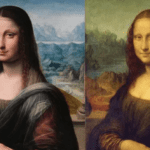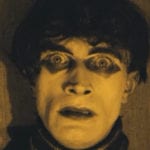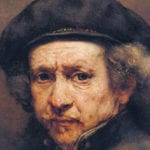 Mysteries
Mysteries  Mysteries
Mysteries  History
History 10 Surprising Stories About the Texas Rangers
 Humans
Humans 10 Philosophers Who Were Driven Mad by Their Own Theories
 Miscellaneous
Miscellaneous 10 Video-Game-Worthy Weapons and Armors from History
 Weird Stuff
Weird Stuff 10 Psychics Who Accurately Predicted Wartime Events
 The Arts
The Arts 10 Pieces of Art Inspired by a Broken Heart
 Health
Health 10 Science Fiction-Sounding New Medical Treatments
 History
History 10 Surprising Facts About the Father of Submarine Warfare
 Space
Space Ten Astonishing New Insights into Alien Worlds
 Weird Stuff
Weird Stuff 10 Bizarre Summer Solstice Rituals Still Practiced Today
 Mysteries
Mysteries Top 10 Haunting Facts About the Ghost Ship MV Alta
 History
History 10 Surprising Stories About the Texas Rangers
 Humans
Humans 10 Philosophers Who Were Driven Mad by Their Own Theories
Who's Behind Listverse?

Jamie Frater
Head Editor
Jamie founded Listverse due to an insatiable desire to share fascinating, obscure, and bizarre facts. He has been a guest speaker on numerous national radio and television stations and is a five time published author.
More About Us Miscellaneous
Miscellaneous 10 Video-Game-Worthy Weapons and Armors from History
 Weird Stuff
Weird Stuff 10 Psychics Who Accurately Predicted Wartime Events
 The Arts
The Arts 10 Pieces of Art Inspired by a Broken Heart
 Health
Health 10 Science Fiction-Sounding New Medical Treatments
 History
History 10 Surprising Facts About the Father of Submarine Warfare
 Space
Space Ten Astonishing New Insights into Alien Worlds
 Weird Stuff
Weird Stuff 10 Bizarre Summer Solstice Rituals Still Practiced Today
10 Rare Surviving Films Of Famous People
Can you think of a living famous person who has never been filmed—even once? Probably not. These days, with paparazzi and ubiquitous camera phones, such a thing seems impossible.
So it might seem strange that many famous people, even long into the 20th century, rarely or never appeared on film. Unless a new home movie or forgotten broadcast is discovered somewhere, each of these 10 people only made a few appearances on surviving films.
10 George Orwell
George Orwell is best known for his dystopian novels 1984 and Animal Farm. Many terms from 1984, such as “thought police” and “Big Brother,” have made their way into everyday language. Even his name has become an adjective, “Orwellian,” referring to brutal and repressive methods of keeping political power.
Although Orwell spoke and gave lectures on the radio, there are no surviving recordings of his voice. Until recently, it was believed that there were no films of him, either. We now know that there is at least one film, although no voice recordings have been discovered.
In 2012, British Pathe found the only known footage of Orwell in their archives. An 18-year-old George Orwell, then known by his real name of Eric Arthur Blair, can be seen walking across a field at Eton with a group of other students.
This short, silent shot doesn’t tell us much about Orwell. But it is interesting to get this brief glimpse of his early life, which went on to shape his experiences and political views as an adult.
9 Anne Frank
On July 22, 1941, a couple got married in Amsterdam. Someone filmed the couple leaving for their wedding and the onlookers in the windows above. One of the onlookers was Anne Frank, a young girl who lived next door. She is only seen for a few seconds, but this is the only film of her that’s ever been found.
Just a year later, Anne Frank and her family went into hiding after the German invasion of the Netherlands. They spent years hiding in a secret annex with other Jewish families, trying to avoid detection and deportation.
In 1944, they were discovered by the Nazis and sent to concentration camps. Anne did not survive the war. However, she lived on through her diary, which was preserved and published after her death.
The married couple in the film, who owned the footage, only recognized the girl in the window years after Frank had died. The couple first gave a short clip of the film to Anne’s father, Otto Frank, who was the only person in the secret annex to survive the war. Later, they gave a copy of the film to the Anne Frank Museum, which uploaded the video to YouTube.
8 Pierre-Auguste Renoir
Pierre-Auguste Renoir was a prolific French Impressionist, creating over 1,000 paintings in a variety of styles. He was also the father of Jean Renoir, a famous director who made groundbreaking films like Grand Illusion and The Rules of the Game. Toward the end of Pierre-Auguste’s life, he was filmed at least twice—once by Sacha Guitry and once by an unknown filmmaker, possibly his son.
The elder Renoir had rheumatoid arthritis, but that did not stop him from painting. In both films, he can be seen sitting while assistants hover nearby, ready to help him with ordinary tasks such as picking up a paintbrush or lighting a cigarette.
Despite his limited mobility, Renoir concentrates intently on his canvas and engages in spirited conversation. Unfortunately, we cannot see the painting that he is working on in either film.
Sacha Guitry filmed Renoir for his patriotic film, Ceux de Chez Nous (“Those of Our Land”), which tried to drum up French patriotism during World War I. The second film, by an unknown filmmaker, was given to Harvard by Pierre-Auguste’s grandson. This film’s contents were not discovered until 44 years later when an inventory led to the film’s rediscovery and restoration.
These are the only known films of Pierre-Auguste Renoir. They provide a fascinating window into his technique toward the end of his life when his mobility was limited. Despite his physical limitations, Renoir found ways to continue painting until shortly before his death.
7 Ros Serey Sothea
Ros Serey Sothea was a talented Cambodian singer-songwriter. During her short life, she sang a variety of different types of music, including romantic ballads, weddings songs, rock and roll, and psychedelic music. Ros also starred in a number of films in Cambodia, but these films were destroyed.
After the 1970 coup by General Lon Nol, all the best-known Cambodian musicians were compelled to join the military, including Ros. The only surviving film of her comes from this period. It shows her suited up as a paratrooper, talking to a reporter, and then jumping from a plane.
In Cambodia, things went from bad to worse. When the Lon Nol regime collapsed, the Khmer Rouge, a Cambodian communist movement, assumed power over the country.
Under the Khmer Rouge, any form of creativity was suspect. Artists, intellectuals, and musicians were tortured, starved, sent to work in forced labor camps, or executed. Along with two million other Cambodians, Ros almost certainly died in the ensuing terror. Her grave has never been found.
Fortunately, many of Ros’s records survived even if her films did not. Her music is popular in Cambodia to this day and can be heard all across the world through websites like YouTube and Spotify.
6 Raymond Chandler
Raymond Chandler wrote classic detective novels like The Big Sleep and The Long Goodbye. He also wrote and cowrote many screenplays for movies like The Blue Dahlia and Strangers on a Train.
Philip Marlowe, his most famous character, is the archetype of a hard-boiled private detective whose influence can be felt in everything from Calvin and Hobbes to Dennis Potter’s surrealistic television shows. Ironically, Chandler’s books are indelibly associated with Los Angeles, a city he grew to despise.
Chandler struggled with alcoholism his entire life. During the early years of his writing career, he survived on handouts and his meager earnings from publishing short stories. He finally sold his first novel, The Big Sleep, at age 51. He began to earn good money when he started working for Hollywood as a scriptwriter, although he didn’t enjoy the work.
Chandler gave few interviews and never appeared on television. It was also believed that he never appeared on film, except for some home movies. In 2009, this was proven wrong when a few bloggers and film buffs noticed his cameo in Double Indemnity, a film he cowrote with Billy Wilder.
Chandler can be seen in one shot, sitting in a chair and reading a book. This is Chandler’s only known appearance in any of the films he worked on and his second known appearance on celluloid.
5 Mark Twain
Mark Twain wrote extensively during his life—publishing fiction, nonfiction, travelogues, tall tales, and even early science fiction. He is best remembered for two novels, The Adventures of Tom Sawyer and Adventures of Huckleberry Finn, which cover life along the Mississippi River.
Many of his works are still widely read today. Twain’s influence spread far and wide, from his early support for animal welfare to his reflections and commentary on religion. Even people who have never read his books can imagine a caricature of him in his white suit with wild salt-and-pepper hair and a slightly cantankerous expression.
Although he lived for about 20 years after the invention of moving pictures, there is only one film of Twain in existence. In 1909, Thomas Edison visited Twain’s estate. There, he made a silent film of Twain walking outside his home and having tea with his daughters. This short film shows Twain wearing his signature white suit and may have helped to cement the public’s image of him.
4 Annie Oakley
Annie Oakley performed in traveling “Wild West” shows, demonstrating her incredible accuracy as a sharpshooter. She performed with her husband, Frank Butler, and their dog, George. She also befriended Sitting Bull, the Lakota chief, while he was a political prisoner. He came up with her famous nickname, “Little Sure Shot.”
Oakley demonstrated a talent for shooting at an early age. As a teenager, she was such a good markswoman that she managed to pay off her mother’s mortgage by selling the animals that she hunted.
As an adult, Oakley performed sharpshooting feats across America and Europe, even performing for Queen Victoria at her Golden Jubilee. In her private life, Oakley was reserved. Although she was the world-famous Annie Oakley while performing, she was Mrs. Frank Butler offstage.
In 1894, Oakley and her husband appeared in a film from Edison’s Black Maria studio. This was one of the earliest film studios, where Edison made short movies of dancers, athletes, vaudeville actors, and magicians.
Films from the Black Maria studio were shown on kinetoscopes, which were machines where you could watch a short film through a viewfinder. In Oakley’s Black Maria film, she shoots targets on a far wall and then shoots glass balls that her husband throws in the air.
There is at least one other film of Oakley from a 1917 Personalities newsreel preserved by F.I.L.M. Archives, Inc. This short silent film shows Oakley shooting something (possibly an apple) off the top of a dog’s head. Then she pets the dog as it licks her face.
3 William Faulkner
William Faulkner’s novels are indelibly associated with the American South, where he spent most of his life. Faulkner wrote a series of novels set in the fictional Yoknapatawpha County, Mississippi, with interconnected characters, families, and narratives.
His most famous book, The Sound and the Fury, follows the declining fortunes of an old Southern family, the Compsons, as felt and experienced by a few of its members.
When Faulkner won the Nobel Prize in Literature in 1949, this normally private man suddenly found himself in the middle of a publicity campaign unlike anything he’d ever experienced.
He declined to travel to Sweden to accept the award, writing that “I feel that what remains after the 30 years of work is not worth carrying from Mississippi to Sweden.” He continued to live quietly in Oxford, Mississippi, as he had done for many years.
In 1952, Faulkner starred in a documentary—actually a series of reenactments of scenes from his life—for the television show Omnibus. Faulkner dutifully learned his lines and recreated scenes from his recent past: speaking at his daughter’s high school graduation, making conversation with old friends and farmhands, driving a tractor around his estate, and dealing with some of the fallout from winning the Nobel Prize.
Although some of his friends and associates fall flat in their delivery, Faulkner is a surprisingly good actor. The film is a rare glimpse into the life of a normally reserved and circumspect author.
2 Claude Monet
Claude Monet was a French Impressionist who was most famous for his paintings of nature. Many of these paintings were plein air paintings (made in the open and based on direct observation). Sometimes, he made several paintings of the same scene, showing how light and weather changed it from hour to hour.
Monet is also famous for the garden that he created at his house at Giverny. The garden survives to this day. Like Pierre-Auguste Renoir, Monet had tremendous influence on the Impressionist movement as well as on future generations of artists.
There is only one surviving film of Claude Monet, which is taken from Sacha Guitry’s silent film Ceux de Chez Nous (“Those of Our Land”). As we discussed earlier, this film was intended to boost French patriotism during World War I. It featured many profiles of French luminaries, including actress Sarah Bernhardt, novelist Octave Mirbeau, and sculptor Auguste Rodin.
The Monet section of Ceux de Chez Nous opens with a shot of Monet and Guitry in conversation. They are standing in front of the painter’s famous garden at Giverny. The film then pans across the garden. We see the well-known Japanese bridge as well as a long shot of Monet as he paints.
The film then cuts to a medium close-up of Monet painting in his garden. Although we can’t see the painting, we can see what Monet is looking at as he paints: a pond full of lily pads and a weeping willow on the far bank.
1 Dylan Thomas
Dylan Thomas was a Welsh poet who was most famous for his poems “Fern Hill” and “Do Not Go Gentle Into That Good Night.” Despite his short life, his poems touch on a wide range of subjects—from nature to mortality to recollections from his youth. Thomas wrote poetry from his childhood until his death at age 39.
During his lifetime, Thomas was known as much for his lifestyle as his poetry. In addition to his meager earnings as a writer, he survived by begging and borrowing from friends. During World War II, he famously said that he would rather “live on guile and beer” than take a job in a munitions factory.
Although he worked for the BBC as a writer and broadcaster, Thomas is still remembered as a hard-drinking, hard-charging poet. As the story goes, his last words were: “I’ve drunk 18 whiskies, I think that’s the record.”
Accounts differ as to how he died and if those were really his last words. But both alcohol and morphine are thought to have played a role.
A century after his birth, Thomas was discovered in the background of Pandora and the Flying Dutchman, a 1951 film starring Ava Gardner and James Mason. Jeff Towns, a Dylan Thomas expert, was able to identify the poet from his clothes and general appearance. He compared them to a photograph of Thomas on the set with the film’s director.
Thomas can be seen running with a crowd alongside a race car in the background of one shot. In the video above, watch the bald man get out of the car. At the 1:07:27 mark, pause the video. There are three extras in the distance to the left of the bald man’s head. Ignore them; they’ll just let you know that you’re at the correct place in the film.
Instead, look to the right of the bald man’s head. In the distance, the first extra on the beach to the right of the bald man’s head—really small—is Dylan Thomas. He’s only visible for a few seconds. But this footage was tremendously exciting for Thomas enthusiasts and scholars, who had been searching for footage of Thomas for years.
Elizabeth Main writes zines, books, and articles for Calhoun Press. She lives in Hawaii.








